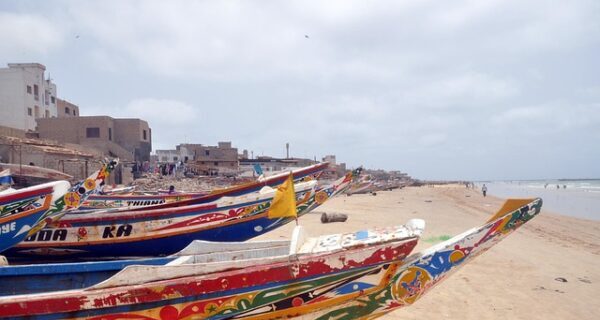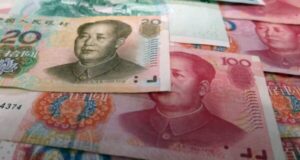
Senegal’s Fiscal Reckoning in 2025: A Turning Point for West Africa’s Rising Economy

Senegal’s Economic Outlook in 2025: Deep Debt, New Leadership, and a Chance for Recovery
Senegal, one of West Africa’s traditionally stable economies and democratic leaders, is facing a period of profound fiscal turbulence. In April 2025, TAC ECONOMICS released an in-depth country risk assessment highlighting the sharp degradation of Senegal’s macroeconomic and fiscal fundamentals over the past two years. What emerges is a story of hidden deficits, growing debt, political transition, and cautious hope for recovery.
This comprehensive analysis dives into Senegal’s worsening public debt situation, structural vulnerabilities, and the implications for investors, policymakers, and international partners such as the IMF.
Hidden Deficits and an Alarming Debt Revision
In early 2024, Senegal’s economic trajectory took a dramatic turn when audits revealed systematic underreporting of public investments and expenditures in national budgets dating back to 2019. The fiscal deficits were not the manageable 5–6% of GDP previously communicated—in reality, they had nearly doubled, peaking at 11.6% of GDP in 2024.
This data manipulation had massive implications for Senegal’s public debt profile. As per the Court of Auditors’ 2025 report, the country’s debt-to-GDP ratio was revised upward from 84% to a staggering 106%, placing Senegal among the world’s most heavily indebted developing economies (ranked 7th out of 145).
Fiscal Transparency and Political Transition: A Chance for Reform?
The fiscal crisis coincided with a political turning point. In the 2024 presidential elections, opposition candidate Bassirou Diomaye Faye secured a first-round victory, signaling public demand for change after a decade under President Macky Sall.
Now under the leadership of President Faye and Prime Minister Ousmane Sonko, the new administration faces the daunting task of restoring trust in public institutions and rebuilding macroeconomic stability. One of their top priorities: enhancing fiscal transparency and negotiating a revised financial support program with the International Monetary Fund (IMF).
The IMF had approved a $1.8 billion program in June 2023, but disbursements were suspended following the audit revelations. A new program will require not just fiscal consolidation but deeper governance reforms and budget oversight mechanisms.
Why Senegal’s Debt Crisis Matters: Structural Risks and Investor Confidence
TAC ECONOMICS’ proprietary Country Risk Premium (CRP) for Senegal stood at 682 basis points in Q4 2024—well above the Sub-Saharan Africa regional average of 524 bps. The CRP reflects the financial market’s risk pricing of Senegalese sovereign debt and is driven by a combination of structural vulnerabilities and macroeconomic fragilities.
Several core issues underpin Senegal’s elevated sovereign risk:
- High share of foreign exchange (forex) debt in its public portfolio
- Growing reliance on short-term, high-cost borrowing
- Historical precedent of debt restructuring with bilateral and multilateral creditors (e.g., Paris Club)
- Rising interest payments, which accounted for 12% of budget revenues in 2023
The Economic & Financial Risk rating, a key metric by TAC ECONOMICS, worsened significantly—from 45.2 in 2022Q4 to 69.1 in 2024Q3 (on a 0–100 scale, where 100 is highest risk).
Energy Sector Growth in 2025: Not a Silver Bullet
- +4% of GDP in export receipts between 2025–2030
- +1 percentage point of GDP in additional government revenues
Yet, TAC ECONOMICS cautions against overreliance on this “energy dividend.” The gains will likely be too limited and too delayed to offset structural imbalances. Moreover, continued external borrowing and high debt service obligations will strain forex reserves and budget liquidity.
Can Senegal Stabilize Its Debt? Outlook Through 2028
- Reduction in fiscal deficit to 3% of GDP by 2027
- Growth in tax revenues via removal of exemptions and energy subsidy reforms
- Tight expenditure control, especially on current spending
- Successful negotiation of a new IMF program and creditors’ continued support
If achieved, these reforms could lower Senegal’s debt ratio from 106% in 2024 to 94% by 2028. Still, this path is fragile. Without strict discipline, any external shock or delay in reforms could reignite liquidity risks.
Conclusion: A Critical Juncture for Senegal’s Economic Future
Senegal is at an inflection point. Years of opaque fiscal management have culminated in one of the most severe debt challenges in the region. But the new political leadership, combined with international scrutiny and renewed commitment to transparency, presents a unique opportunity for reform.
For investors, development partners, and observers of African economies, Senegal in 2025 is both a cautionary tale and a potential success story. The road to recovery will not be easy—but with careful policy execution and international collaboration, stabilization is within reach.
.


